USED ONE OF OUR LESSON PLANS?
Fill in our survey for a chance to win a Science North YETI mug! We will draw winners quarterly throughout the school year.
Fill in our survey for a chance to win a Science North YETI mug! We will draw winners quarterly throughout the school year.

In this hands-on STEM lesson, students will explore the principles of kinematics (displacement, velocity, and acceleration) through real-time data collection using the BBC micro:bit. Using the micro:bit’s built-in accelerometer and the machine learning via platform micro:bit CreateAI, students will train models to recognize different types of motion.

Students will use Problem-Based Learning to design a more efficient battery system. Students will create a galvanic cell and see how it works. They will then use different materials to see how it affects the efficiency of the battery and design a more efficient battery system thinking about the context of where we use batteries most often.

Students will learn the principles of good experiment design, and then apply that knowledge to existing scientific or pseudoscientific works to evaluate their quality.

In this activity, students will consider different types of energy and their ability to change from one type to another. One of the results will be the creation of an interactive energy transformation simulator that can be used for educational purposes. You will be using the program Scratch.
In this four-part lesson, students will learn all about health equity, starting by walking through the “seeing over the fence” analogy to understand how equity is different from equality. They will then develop further context for this issue by examining vaccine inequity as a case study. In part 3, one of Science North’s Indigenous Interns interviews a nurse at the Wikwemikong Health Centre on the challenges of achieving health equity in Indigenous communities. In the final section, the Many Nations, One Voice for Wellness team at Telus Spark will take students through a workshop on Dr. Christopher Emdin’s “Science Genius” method with health equity as the theme. Students will learn how to put their thoughts, feelings and experiences about this complex issue into rap and song.
* Internet connection required
In this three-part lesson, students will learn how scientific research is conducted and why scientific integrity is important in determining what sources of information we can trust. They will understand what can happen when a lack of scientific integrity leads to misconduct and explore scientific integrity with a real-world example of how we develop and test new vaccines. Students will also learn the different parts of a research study and the signs of trustworthy research. They will be introduced to some trusted sources of health information as they learn about the agencies that oversee health research. They will learn about the importance of understanding history and increasing diversity in science as they explore the contributions of scientists from different communities and backgrounds. They will also explore the intersection of science and social issues as they learn how to have discussions about scientific literacy. Each learning objective is followed up by an online game or hands-on activity to reinforce the concepts.
* Internet connection required

Students will use a graph provided or select a real-world situation that can be modelled by a quadratic function. Students will then use Python coding language to create a program that evaluates the function at any two given points and calculates the average rate of change.
In this lesson, students will understand the role the immune system plays. They will learn about the different types of pathogens, how they infect our bodies and the stages of infection. In the Agents of the Immune System GooseChase experience, students will work independently or as part of a team to complete the missions, learn about the immune system and collect points. Students' submissions in the GooseChase app will remain hidden from other students who participate in the Agents of the Immune System experience.

Write pseudocode to identify an organic chemical based on its formula.

Write a program in Scratch to demonstrate electron configuration and the Aufbau principle.
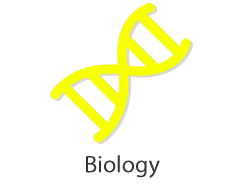
In this post activity to the school program, Neuroscience, students will learn the difference between reaction and reflex neural pathways. They will simulate what happens in their body during a reaction and during a reflex to better understand why there is a difference between the two.

Students will learn how mutagens can cause mutations by changing the genetic material in cells.

Students will learn appropriate terminology and the roles of various animal cell organelles, such as lysosomes, vacuoles, mitochondria, ribosomes, smooth and rough endoplasmic reticulum, and Golgi bodies.

For this lesson students will build a hydraulic system using syringes filled with water to demonstrate Pascal’s principle. This system will be controlled using an Arduino, bread board, and DC motor. Students will need to also be familiar with simple circuits, electrical terms, and components when completing this activity. The code needed for this project is quite simple. I recommend taking one class to familiarize students with the basics of the code and how the Arduino works by having them configure a simple circuit and play with some code to make some LEDs change and blink. Once familiar with the code basics, the code to control the DC motor and make it go forward and backwards, along with a circuit diagram, may be provided to the students depending on what the goals for the students may be.

For this lesson it is designed as a possible extension to the programmable hydraulic system lesson or as a stand alone lesson. There is an offline coding component while also tying to multiple possible strands of the curriculum.
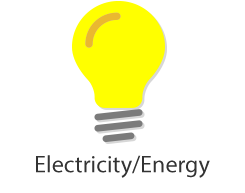
In this lesson students will build a device that has at least 4 energy transformations. This lesson is intended for the college level.
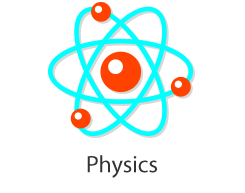
In this lesson students will build a device that has at least 4 energy transformations. This lesson is intended for the college level.

In this lesson students will use syringes filled with liquid and gas to investigate Pascal’s Principle. They will also design and construct a hydraulic system. This lesson is intended for the college level.

In this lesson students will investigate the relationship between electricity and magnetism by making an electromagnet and a rail gun. This lesson is intended for the college level.

In this lesson students will accelerate a block or toy car using a rubber band rope. They will collect data using an app and graph position-time and velocity-time graphs in order to analyse the motion of the object. This lesson is intended for the college level.
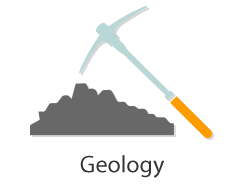
In this lesson students will understand that geologists rely on two main types of dating: relative and absolute using some hands on models. This lesson is intended for the university level.

In this lesson students will learn that scientists, archaeologists, and geologists use radiometric dating to measure the physical properties of rocks and objects and determine their chronological age. This lesson is intended for the university level.

In this lesson students will present a business plan to incorporate as a space mining start-up company. They will use a database to research and identify asteroids and comets that can be mined. This lesson is intended for the university level.
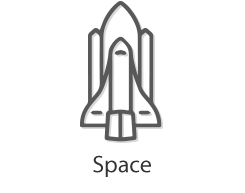
In this lesson students will describe some milestones in the development of telescope technology and how it has been improved over time. They will know that telescopes use all wavelengths of electromagnetic radiation to observe celestial bodies. This lesson is intended for the university level.

In this lesson, students will understand that earthquakes are detected using seismographs which are instruments that record the shaking of the earth and describe the characteristics of the four main types of seismic waves. This lesson is intended for the university level.

Part A: In small groups, using either the recipe provided, or having researched their own, students will make homemade cheese or yogurt. They will also create a display board outlining their procedure and observations. Part B: Students will research and prepare a written report of another biotechnological application in the health, agricultural, environmental or food industry. Part C: Students will present their findings to their classmates.

Students will carry out a laboratory experiment to isolate particles of iron in their breakfast cereal. They will then identify other variables that they would like to test for and using their Smarter Steps to Inquiry framework, go ahead and test their variable. Lastly, a class discussion would take place discussing the difference between chemical and nutritional iron and the need for iron in our bodies. Students should also be prepared to discuss the other variables that they tested for and their results.